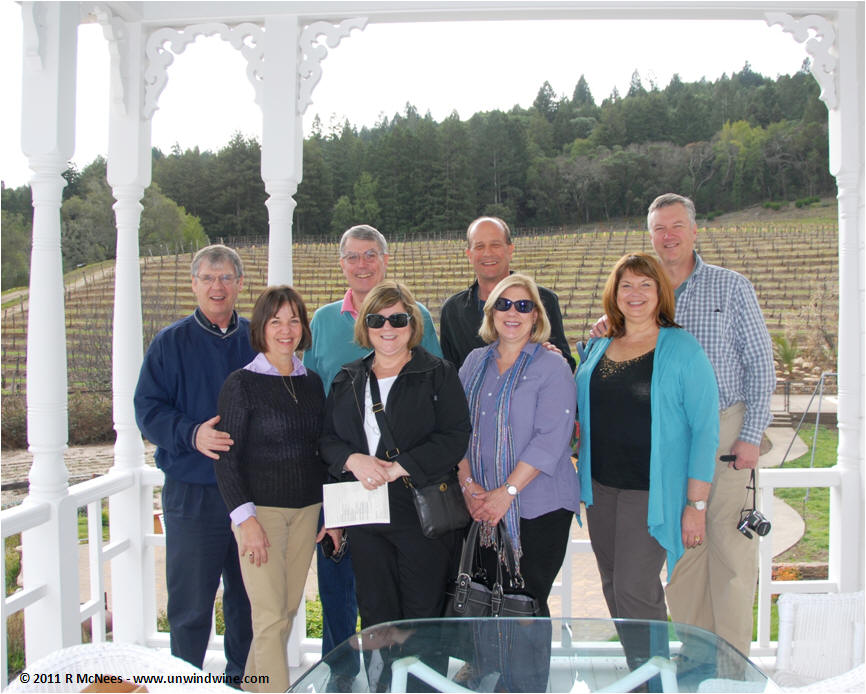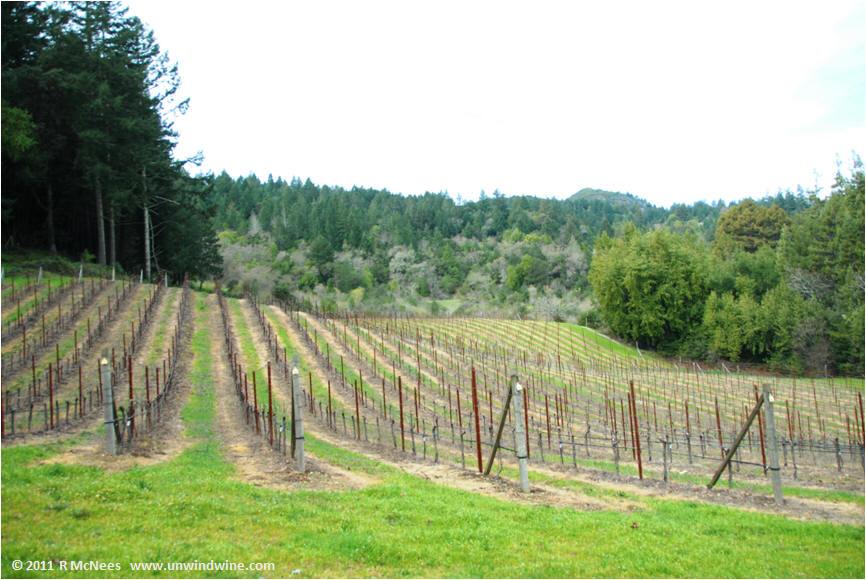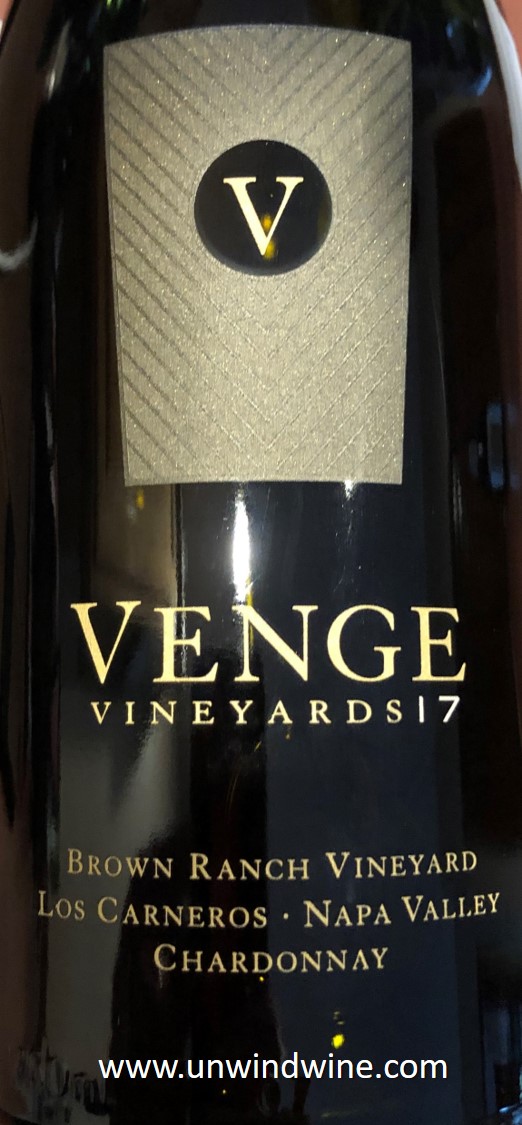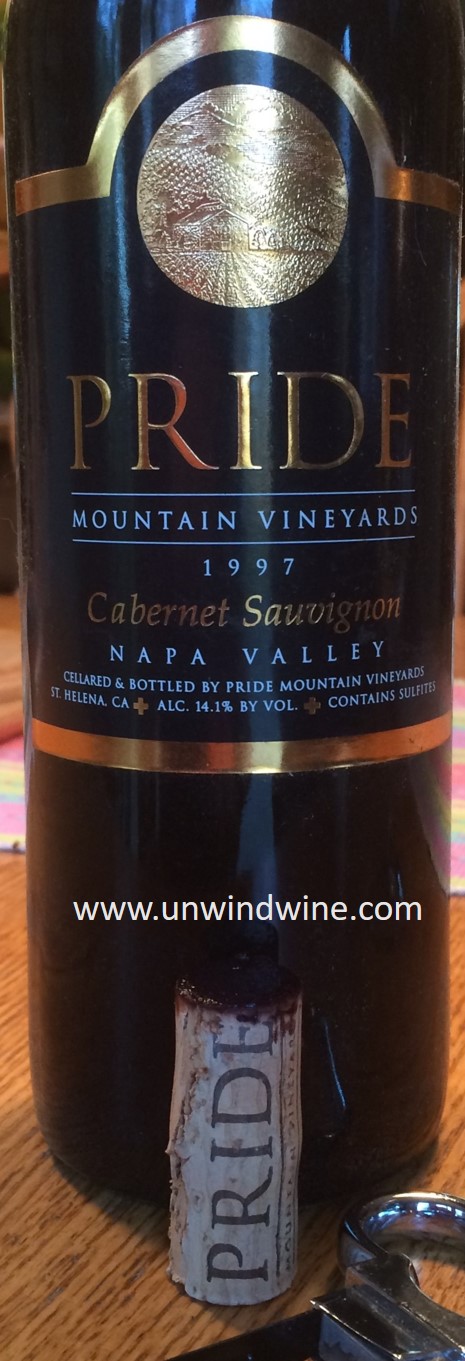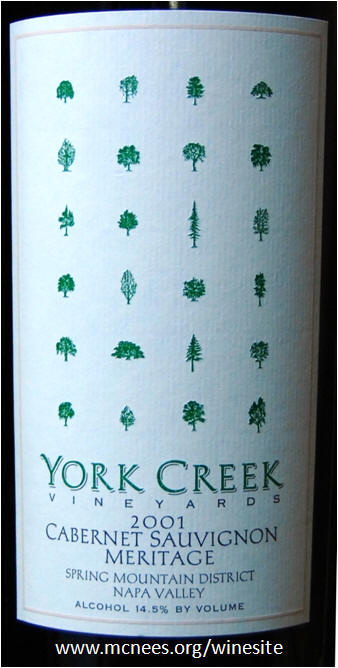Family reunion dinner features beef tenderloin and select flight of Napa Cabs
Cousin/Nephew Chris visited from South Carolina crossing the country visiting several family members along the way enroute to a family reunion in Wyoming. We gathered for a family dinner to catch up with Chris and meet his new wife and family. Chris spent several tours serving our country in Central Asia and traveled extensively during furloughs and leaves. On two occasions he visited Napa Valley and sent us wines of producers he visited.
One of the wines we received from Chris that we consumed a while back, this Liana Estates Vintners Blend 2015. While on leave from his tour in Central Asia, he visited Napa/Sonoma wine
country and shipped several bottles back to me, Uncle Rick, and cousin
(son) Ryan.
In town for this visit, our kids gathered to visit with their cousin. Linda prepared a beef tenderloin with grilled sweet corn, haricot verts and mashed potatoes.
Son Ryan and I pulled from the cellar several Napa Cabs for the dinner including one specific bottle we pulled from the cellar was this bottle we received from Chris a while back that we were holding until we might open it with him.
Tonight we opened from this producer a special winemaker signed bottle of the White Rock
Vineyards "Laureate" Napa Valley Cabernet Sauvignon 2004. This was
obtained and gifted to us by our nephew Chris who acquired it for us
during a Napa trip a several years back.
White Rock
Vineyards "Laureate" Napa Valley Cabernet Sauvignon 2004

This is from White Rock Vineyards in the
Stags Leap District appellation in the southern foothills, sited
in a small valley at the
base of the Stag’s Leap Range, in southeast Napa Valley just above the town of Napa.
The estate is a 35-acre naturally farmed vineyard, with distinctive terroir of white volcanic ash soils. The property and White Rock Vineyards dates back to 1870. Originally a land grant to Salvador
Vallejo, the original parcel was purchased in 1870 by Dr. Pettingill, a dentist, brewer, winemaker, and horse breeder.
Pettingill planted a vineyard on the property, one of the earliest plantings in Napa Valley. In 1871, he
constructed a winery on the property out of the white rock he quarried from the property, using only a hand saw to cut and shape the rock. In that early winery, he produced 7,000 gallons of wine
per year.
Dr. Pettingill built two cellars, where he began the
tradition of bottle ageing his wine for 4 years before release, a method
and tradition still practiced at White Rock to this day.
Henri and Claire Vandendriessche purchased the property in 1977 and set to work restoring the estate vineyards and winery. The Vandendriessche's released their first vintage in 1986 and it has been family owned and operated ever since.
Henri Vandendriessche, whose family originated in Northern
France, came to America to study Economics at UC Berkeley in 1960. In 1967 he
met Claire who was raised in Napa Valley. They fell in love and set out to raise a family and pursue a life in winemaking, purchasing a 64
acre estate north of Napa in 1977.
They
raised their young family on the farm living in the old winery. They replanted much of the vineyard and
dug a cave into the solid rock where they could make and cellar their
wine.
Always a family business, Henri oversaw all aspects of the vineyard
management and winemaking, while Claire marketed and sold the wines. They raised three
children who were involved in every aspect of the operation.
The White Rock Laureate label is their Bordeaux Blend comprised of estate grown fruit, 75% Cabernet Sauvignon, 20% Cabernet Franc, 3% Merlot, and 2% Petit
Verdot.
Plenty of life left and still holding very nicely at two decades, the cork, label and fill level were perfect. This was dark garnet colored, medium full bodied, rich powerful concentrated ripe blackberry and black currant fruits accented by notes of coffee, vanilla bean, mocha and hints of licorice
with supple tannings on a lingering finish.
RM 92 points.
@whiterockcaves
Pride Mountain Vineyards Napa Valley Cabernet Sauvignon 1997
Everything about Pride Mountain Vineyards, Napa Valley California Cabernet Sauvignon, Merlot wine producer profile, wine tasting notes,
wine and food pairing tips, best vintages, history of the property,
information on their wine making techniques, terroir and soil. You can
also read about the Grapes used for California wine and learn about the extensive History of Napa Valley, California Wines
Pride Mountain Wines History, Overview
Pride Mountain Vineyards is located 2,100 feet up on Spring Mountain.
The vineyards have been around a long time. In fact, they date all the
way back to 1869. Archived records show the property was already being
used for the production of wine at the time. The original structure was
destroyed by fire after Prohibition. Pride Mountain Vineyards finished
construction and a complete renovation of their estate in 1997.
Government regulations have interesting and difficult consequences
for Pride Mountain Vineyards. Due to the properties location, the winery
is required to maintain two separate facilities, one in Napa and the
other in Sonoma.
The property line is divided down the center of the crush pad. Pride
Mountain Vineyards recent vintages are designated Napa Valley, Sonoma
County or with a blend of both. This inspired Pride Mountain Vineyards
to add the humorous tag, "One Ranch, Two Counties."
Pride Mountain Vineyards, Wines, Winemaking
Pride Mountain Vineyards owns three vineyards which add up to 235 acres on Spring Mountain in the Mayacamas
mountain range. Their high elevation gives them an advantage over
growers located further down the mountain. The soil includes volcanic
rocks, gravel loam and stones along with some clay. They grow Cabernet
Sauvignon, Merlot, Cabernet Franc, Petit Verdot, Syrah, Petit Sirah, Chardonnay and Viognier.
Pride Vineyards practices sustainable farming techniques. After
harvesting, Pride vinifies all their vineyard lots separately. They
own 40 different blocks which comes to being fifty lots of wine that are
produced each to their own needs. The percentage of new French oak
varies from vintage to vintage.
Pride Mountain Vineyards produce a myriad of different wines and bottling's including Cabernet Sauvignon, Claret (a Bordeaux styled, Merlot, Cabernet Sauvignon blend), Merlot, Viognier, Syrah and Petit Sirah.
Serving and Decanting Pride Mountain wines with Wine, Food, Pairing Tips
Pride Mountain Vineyards wines are best served at 15.5 degrees
Celsius, 60 degrees Fahrenheit. The cool, almost cellar temperature
gives the wine more freshness and lift. Young vintages of their red wine
can be decanted
for 1-3 hours, depending on the character of the vintage. This allows
the wine to soften and open its perfume. Older vintages might need very
little decanting, just enough to remove the sediment.
The red wine of Pride Mountain Vineyards is best served with all
types of classic meat dishes, veal, pork, beef, lamb, duck, game, roast
chicken, ribs, hamburgers, barbecue, roasted, braised, grilled dishes
and stews. Pride Mountain Vineyards is also good with Asian dishes,
hearty fish courses like tuna, salmon, mushrooms and pasta.
The white wine of Pride Mountain Vineyards is best served with all
types of seafood and shellfish, sushi, sashimi, chicken, veal, pork and
cheese.
www.pridewines.com
Read more at:
https://www.thewinecellarinsider.com/wine-tasting-note/?vintage=1997&wine=Pride%20Mountain%20Vineyards%20Cabernet%20Sauvignon%20Reserve
The vineyards and wine production date back to 1869 according to archived records. The original structure was destroyed by fire after Prohibition. Pride Mountain Vineyards built the current building as part of a complete renovation of their estate in 1997.
Due to the property's unique location at the summit, atop the mountain straddling Napa Valley to the east, and Sonoma Valley to the west, the winery is required to maintain two separate facilities, one in Napa and the other in Sonoma. The property line is divided down the center of the crush pad.
Pride Mountain Vineyards labels may be designated Napa Valley, Sonoma County or both, depending on the source of the blend. Pride Mountain Vineyards brands their estate, "One Ranch, Two Counties."
Pride Mountain Vineyards consists of three vineyards totaling 235 acres on Spring Mountain in the Mayacamas mountain range that separates the Napa and Sonoma Valleys. Their distinctive terroir with their high elevation includes soil of volcanic rocks, gravel loam and stones along with some clay. There they grow Cabernet Sauvignon, Merlot, Cabernet Franc, Petit Verdot, Syrah, Petit Sirah, Chardonnay and Viognier in 40 different blocks produced in fifty lots of wines that varies from vintage to vintage.
Tonight's tasting was consistent with earlier bottles of this wine. The 1997 vintage produced long lived wines that took several years to actually open and reveal their true potential. I wrote about this wine in April 2017 when I gave it 93 points.
"Consistent with earlier tasting notes in its profile, it seemed to
show more polish and balance than I remember. Previous reviews I have
given over the last several years have been increasing by a point
indicating this vintage release is hitting its stride, at the peak of
its drinking window.'
This label was awarded 94 points
by Wine Spectator, 93 points
by Stephen Tanzer's International Wine Cellar, 91-93 points
by Robert Parker's Wine Advocate, and 92 points
by Wine Enthusiast, 91 points
by Connoisseurs Guide. It was a Wine Spectator *Top 100 Wines
of 2000*.
@pridewines
York Creek Cellars Spring Mountain Napa Valley Cabernet Sauvignon 2001
Here is our last bottle of this rare label from a great vintage, showing well at two decades of age. The owner of
York Creek is
Fritz Maytag, notably known for his Anchor Steam brewing company and beer brand that is synonymous with San Francisco.
Maytag is of the Maytag family, more notably known for their appliances. While studying at Stanford University,
he spent time hanging out in the North Beach neighborhood of
San Francisco where he fell in love with the
Anchor Brewing Company. In 1965, he jumped on the opportunity to save Anchor from going out of
business, buying a controlling interest “for the price of a used car.”
His Anchor Steam beer preceded the craft brewing craze
that become wildly popular over the following two decades. Over that time, Maytag developed Anchor Steam into a world-renowned
and best-selling brand.
Fritz also pursued interests in winemaking, in addition to craft brewing, when, in 1968, he purchased the York Creek property high above Napa Valley. He continued to add land and invest in planting
and replanting vineyards ever since.
Fritz farmed the the York Creek property selling grapes from his 125-acre
mountain vineyard to other winemakers including many outstanding names in the California wine
industry such as Ridge Vineyards, who produced a York Creek vineyard designated label.
York Creek began making a small
amount of its own wine in 1992, and to this day, fewer than 1,000 cases of
this Meritage are bottled a year, produced entirely from estate grapes grown
on Spring Mountain above St. Helena.
Like Pride Mountain vineyards, York Creek's property sits high above
the Napa and Sonoma valleys, on the crest of the Mayacamas Range of
mountains where the Napa side has long been known
as "Spring Mountain." The
Maytag property consisted of 125 acres of vineyards surrounded
by another 575 acres of woods and orchards, with 24 varieties of
native trees whose silhouettes are shown and illustrated on the York Creek wine
labels.
York Creek grows 15 different grape varieties—in nearly 50 individually
named blocks which they market under different vineyard designated labels such as "Horseshoe," "Arena," "Dynamite Hill," and
"Track."
The property "York Creek Vineyards" in named for the defining
feature of the land, the creek which flows all
year for a mile and a half through thick
forests and redwood groves. The creek flows from a small trickle on hot summer days, and 'roars like a locomotive' during winter when it rains.
The York Creek wine labels' and branding feature the 24 extensive, diverse native trees that flourish on the York
Creek property. The trees on their labels are Maytag's way of
celebrating the varied wild areas of York Creek with its forests
that outnumber the vineyards, and which provide great enjoyment and pleasure.
Winery's notes: "In the early years
we made wine from all four of the top varieties grown in Bordeaux, and
made our blends a little differently each year. Though each vintage was
predominantly Cabernet Sauvignon, the blends also contained varying
amounts of Merlot, Cabernet Franc, and Petit Verdot."
York Creek winery production began in the early 1990s
with their own equipment in other people's wineries. In the early years they focused on three wines: this "Meritage" Cabernet Sauvignon blend, and early
experiments with Port, and our Pinot Blanc.
The early
vintages with crafted by the famous young St. Helena winemaker Cathy Corison. The Cabernet based blends were labeled "Meritage" to indicate that they are blends
of Cabernet, Merlot, Cabernet Franc, and Petit Verdot, a typical blend of
the the Bordeaux varietals and the wines of the Bordeaux region in France.
In 2000, Maytag built a tiny winery in San Francisco, just across the
street from the Anchor Brewery, moving the equipment down from Napa. After nearly 40 years studying modern winemaking, Maytag began making the wines himself with the help of Tom Holmes as assistant winemaker. Tom had been a fine
brewer at Anchor for several years while earning his B.A. and then his
M.B.A.
In 2000, Tom was about to leave Anchor coop until Maytag enticed him to stay as assistant winemaker. Raised in Hopland, in the heart of the
North Coast wine region, and with his brewing background, Tom was well qualified and eager to take on this role.
This
particular wine is labeled as both Cabernet Sauvignon and Meritage. Its proportion
of Bordeaux varietals is 80% Cabernet Sauvignon, 11% Merlot, 7% Cabernet Franc,
and 2% Petit Verdot, which technically allows it to be labeled as Cabernet Sauvignon.
Maytag markets the wine under the licensed term 'Meritage' which means it is a Bordeaux Blend. Produced in the European style, the
wine is aged in mostly French oak, with some American in certain vintages. This year, 743 cases were produced.
The term Meritage is derived from a combination of the words “Merit” and “Heritage”. Meritage
wines must be US sourced and produced, and include some combination of the
classic Bordeaux
varietals, (for red wines, a blend of the noble Cabernet Sauvignon, Cabernet Franc, Petit Verdot, Merlot and/or Malbec), but may not have any one varietal account for more than 90% of the
blend. The term Meritage is trademarked by the Meritage Alliance group which only allows the use of the branded name for a US Bordeaux Blend under license.
Over the years, few producers have opted to pay the license fee and have foregone the Meritage (pronounced like Heritage) branding. Instead many wineries
choose to brand their wines, creating a 'proprietary blend'. The Alliance considers these wines to be the best of the vintage, and
consumers can expect big and bold flavors, brimming with ripe and lush
berry fruit that will only improve with oak barrel aging.
At two decades, the fill level, label, foil and cork were in perfect condition. Tonight, this was consistent with my previous tasting a decade ago, back in 2009, when
I wrote: "Dark, full bodied, full flavored currant, red raspberry, and black cherry with a long soft polished tannin finish." 92 points. Much like the Pride, heralding from the same terroir, this was dark garnet colored, medium full bodied, complex, finely integrated blackberry and black cherry fruits accented by notes of cassis, cola, and hints of mocha turning to silky fine grained tannins on the long lingering finish.
RM 92 points.
 Cohn strives for elegant and
complex wines and he believes the craggy soil of the aptly named
Rockpile
produces some of the most complex and distinctive minerality in all of
California.
Cohn strives for elegant and
complex wines and he believes the craggy soil of the aptly named
Rockpile
produces some of the most complex and distinctive minerality in all of
California. This
is the style and profile of Syrah that we favor, dark inky purple, full
bodied, concentrated forward black and blue berry and cherry fruits
with bright acidity accented by tones of anise, graphite, leather and
hints of pepper with a long tongue puckering finish with firm but soft
approachable tannins. This was almost over the top for some of the crowd but was a crowd-pleaser none-the-less.
This
is the style and profile of Syrah that we favor, dark inky purple, full
bodied, concentrated forward black and blue berry and cherry fruits
with bright acidity accented by tones of anise, graphite, leather and
hints of pepper with a long tongue puckering finish with firm but soft
approachable tannins. This was almost over the top for some of the crowd but was a crowd-pleaser none-the-less. 





